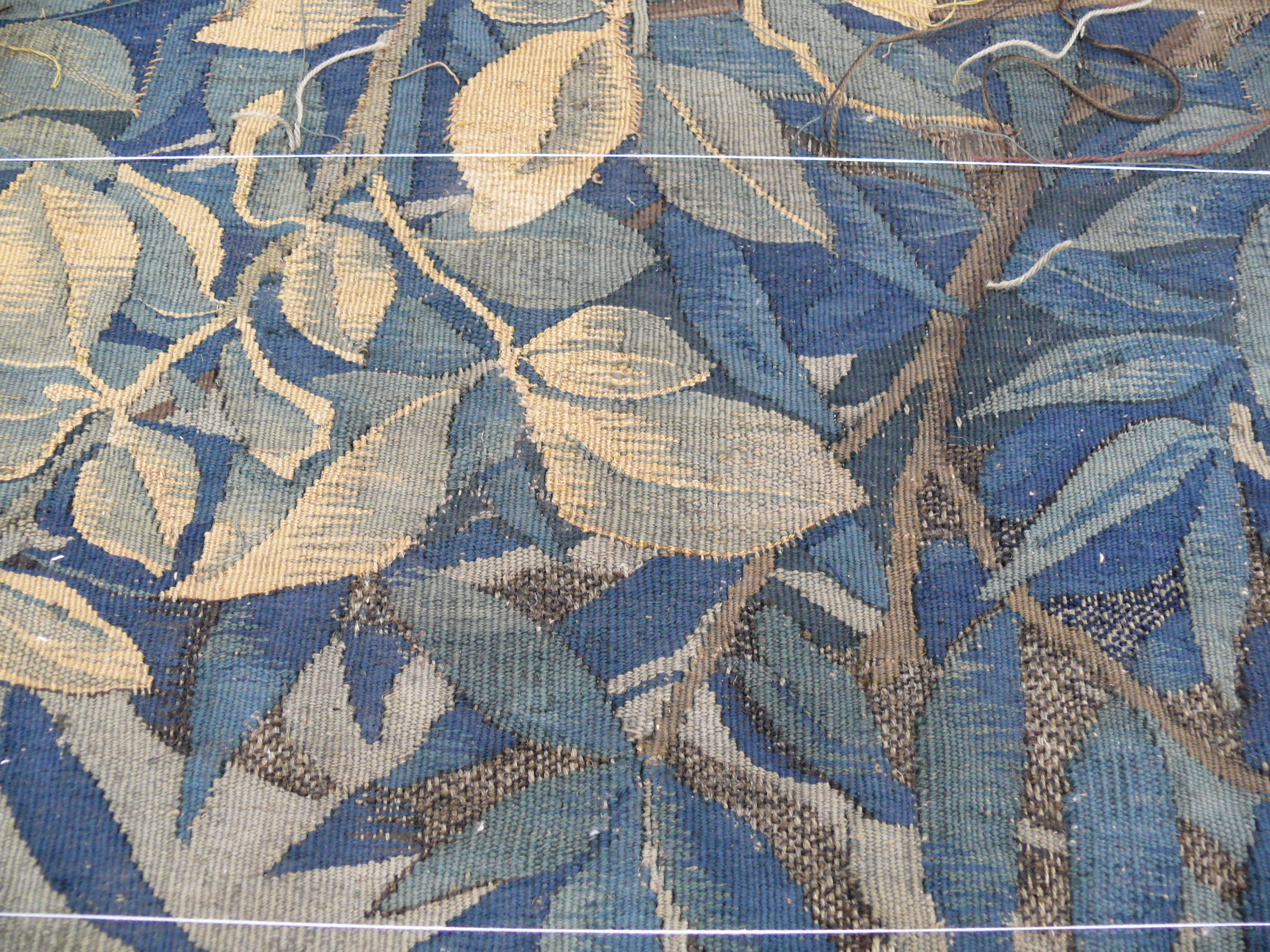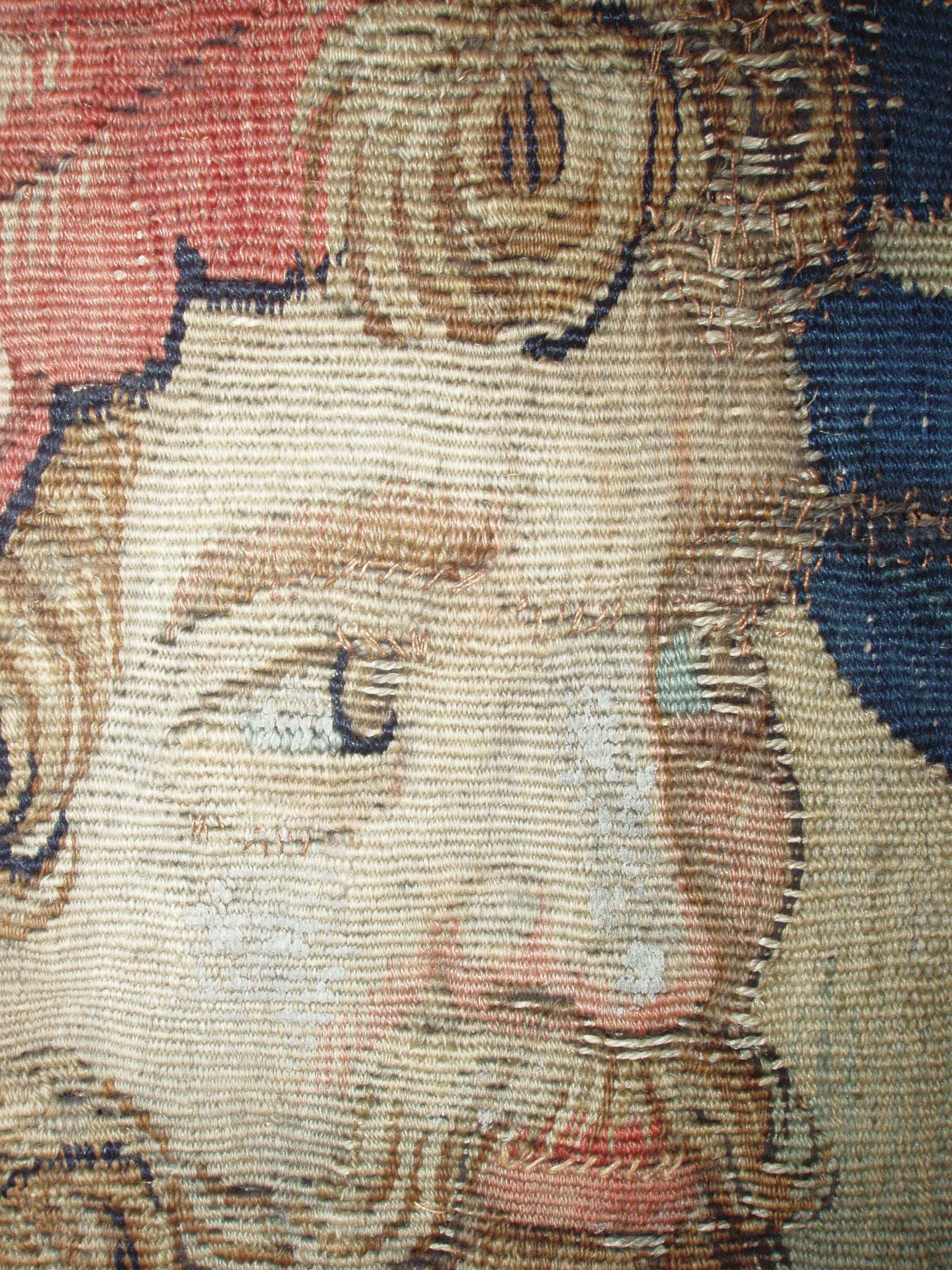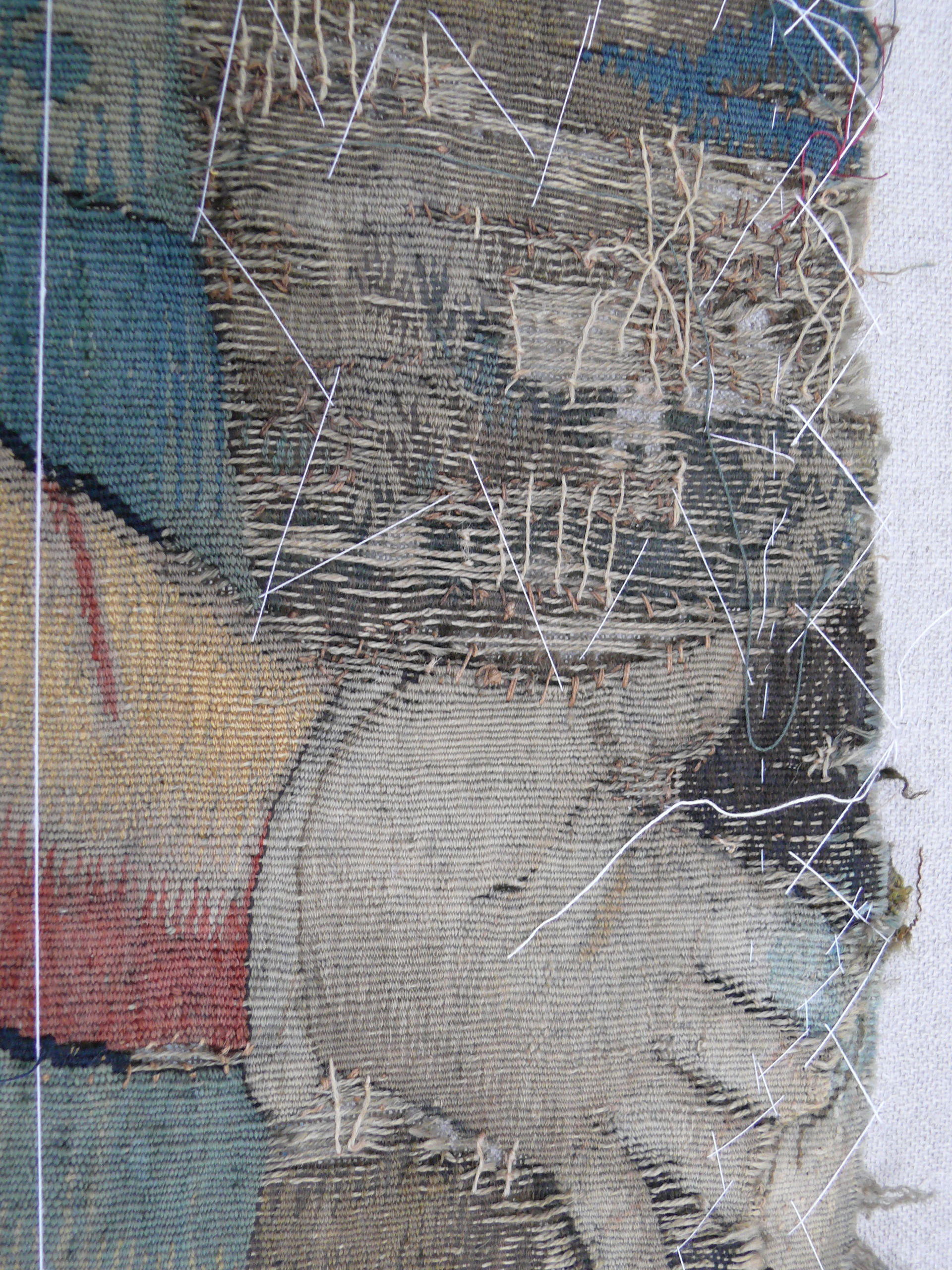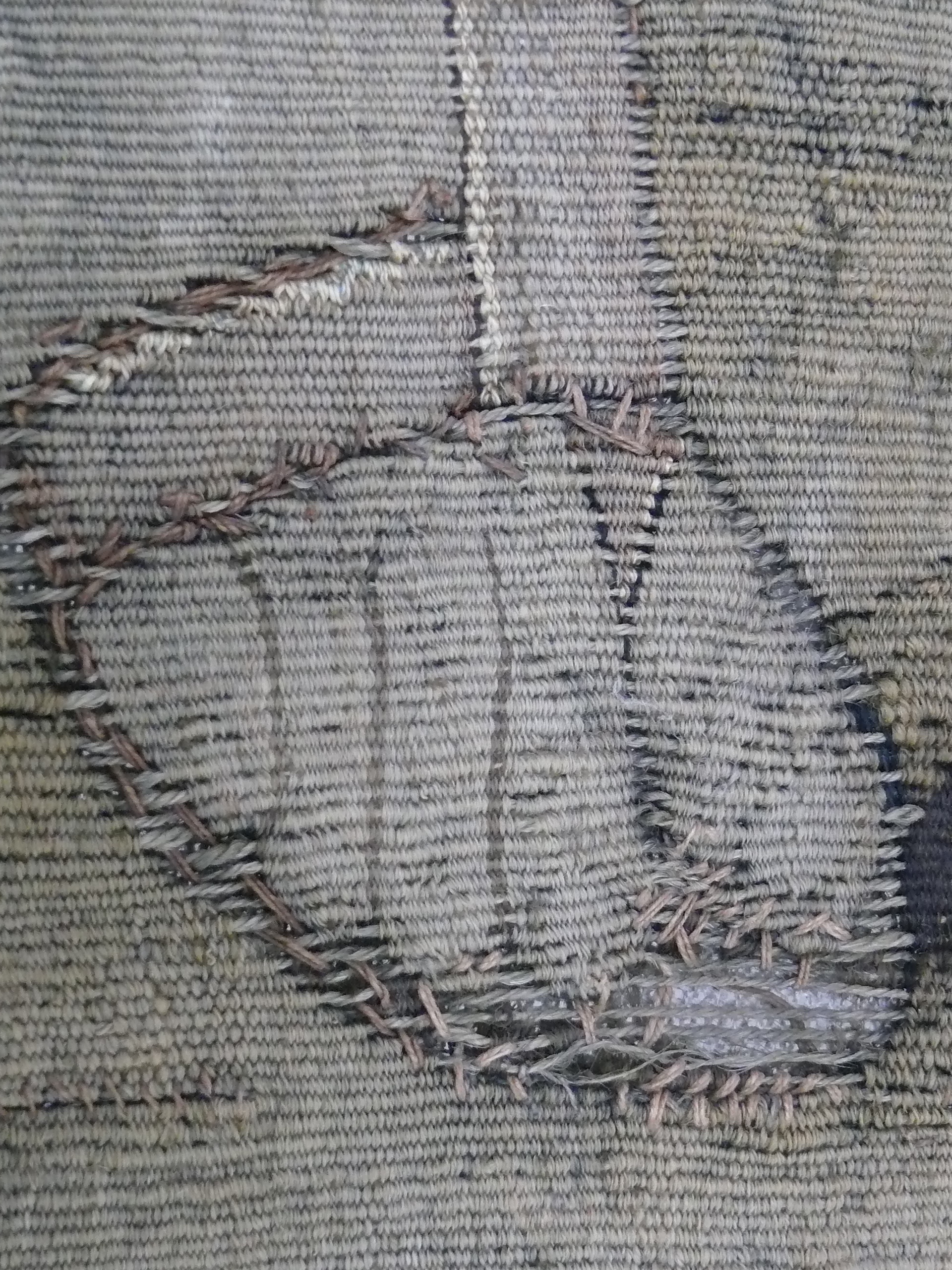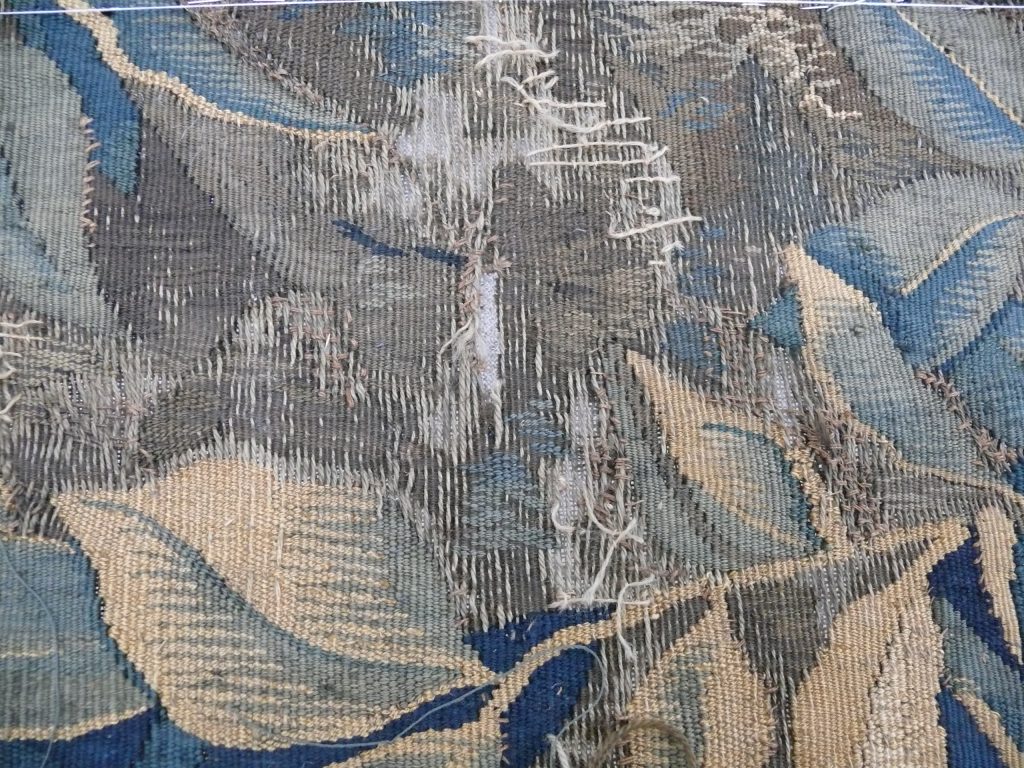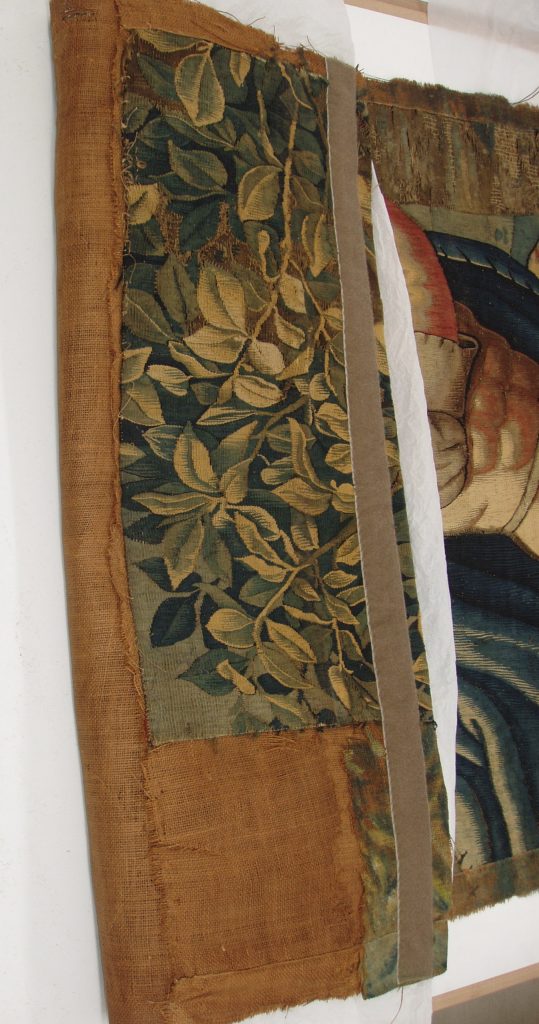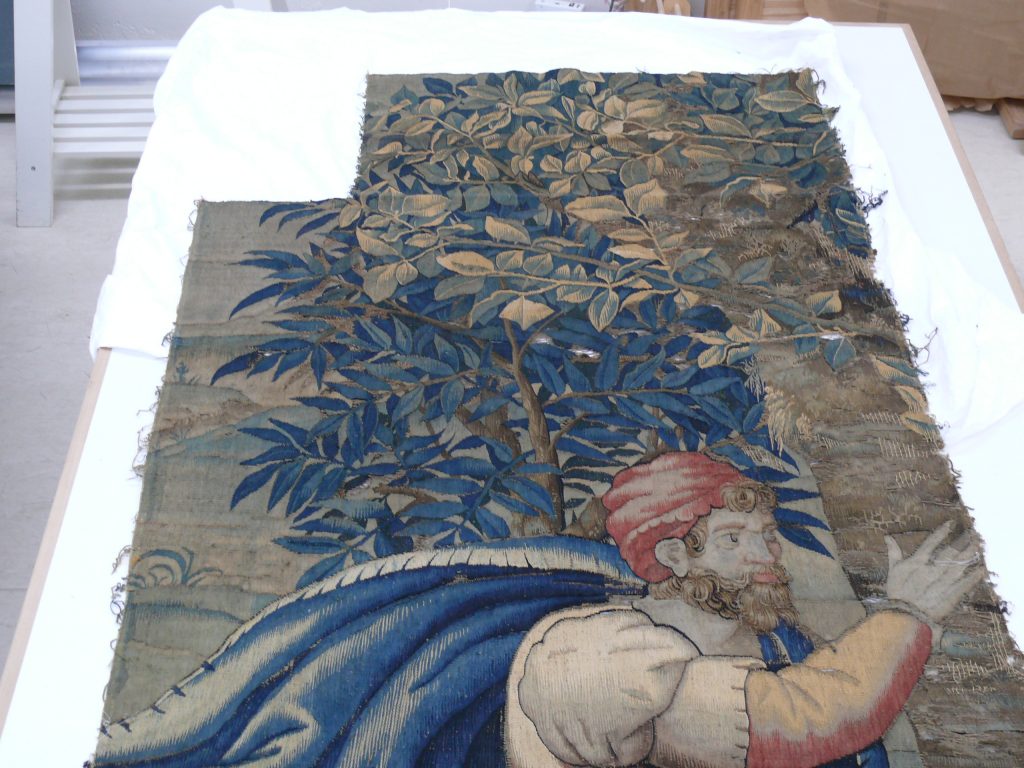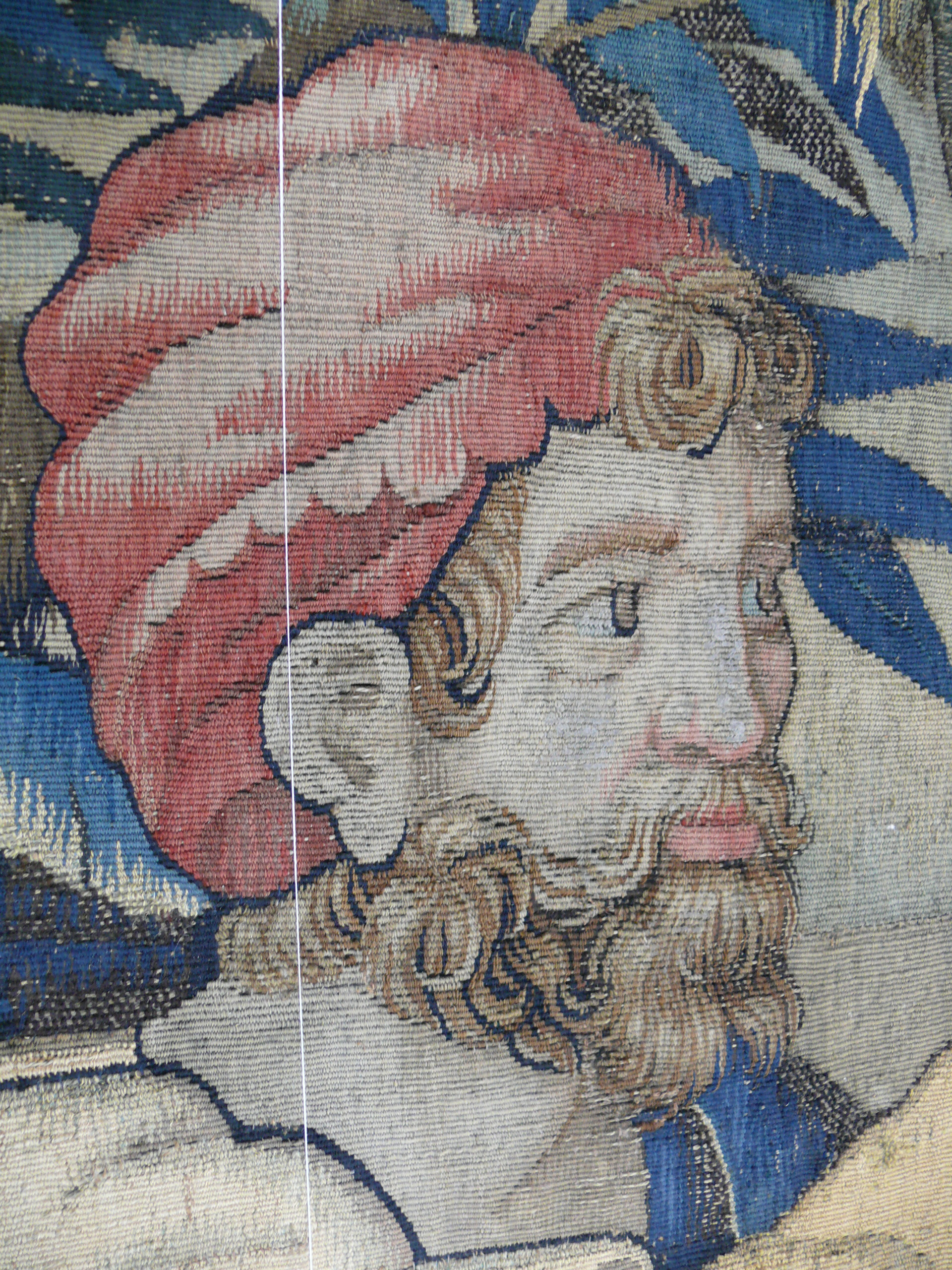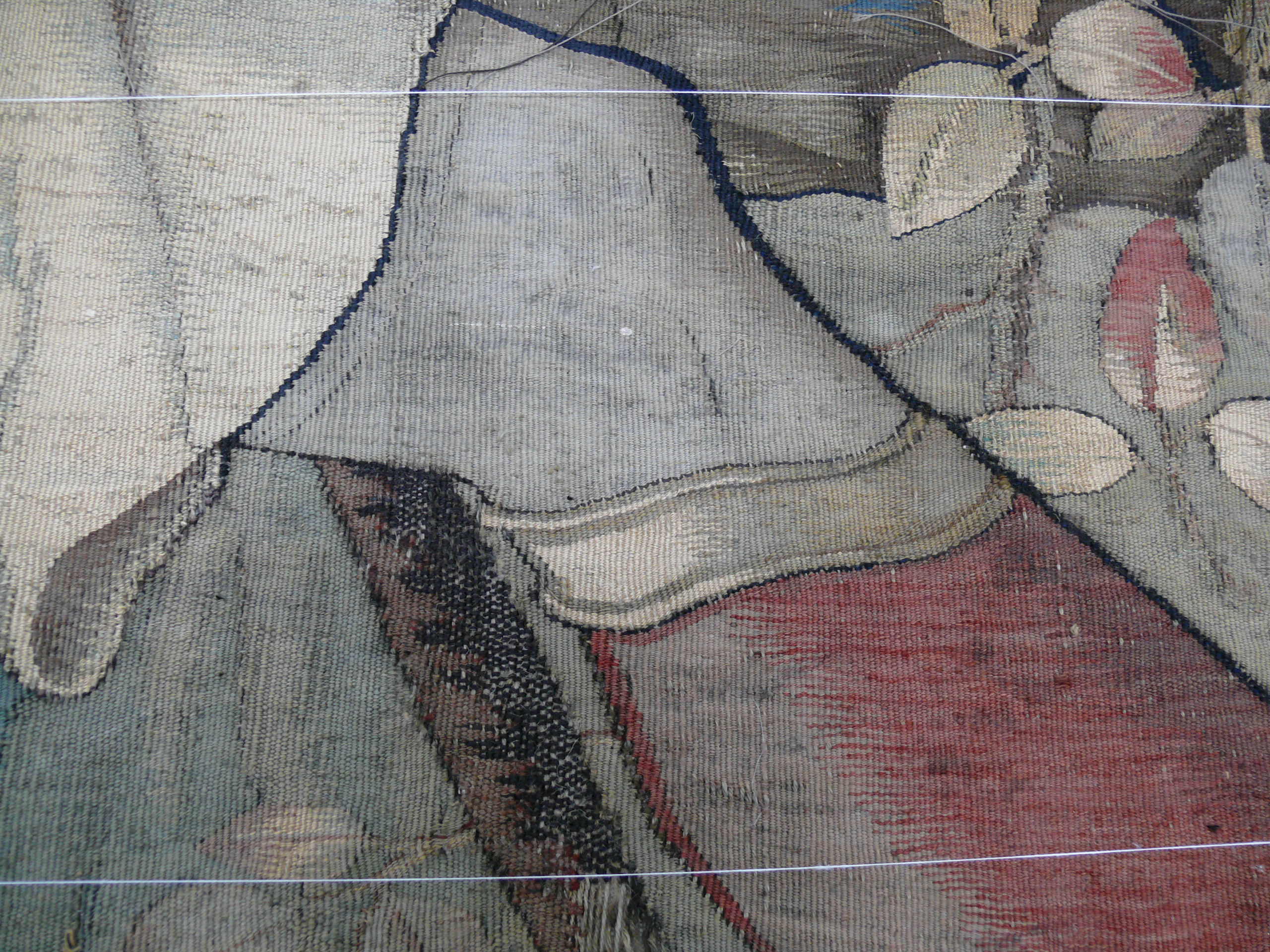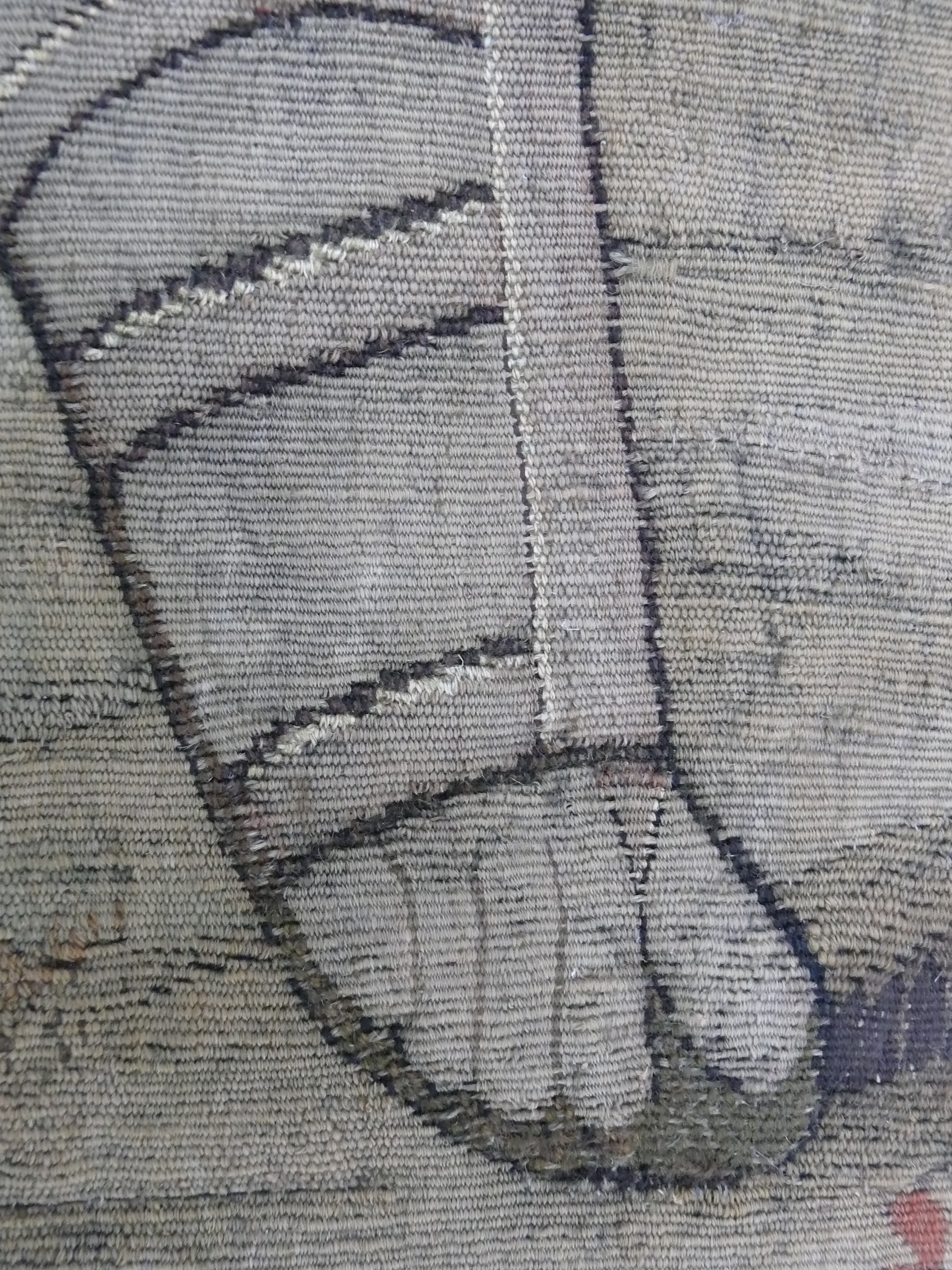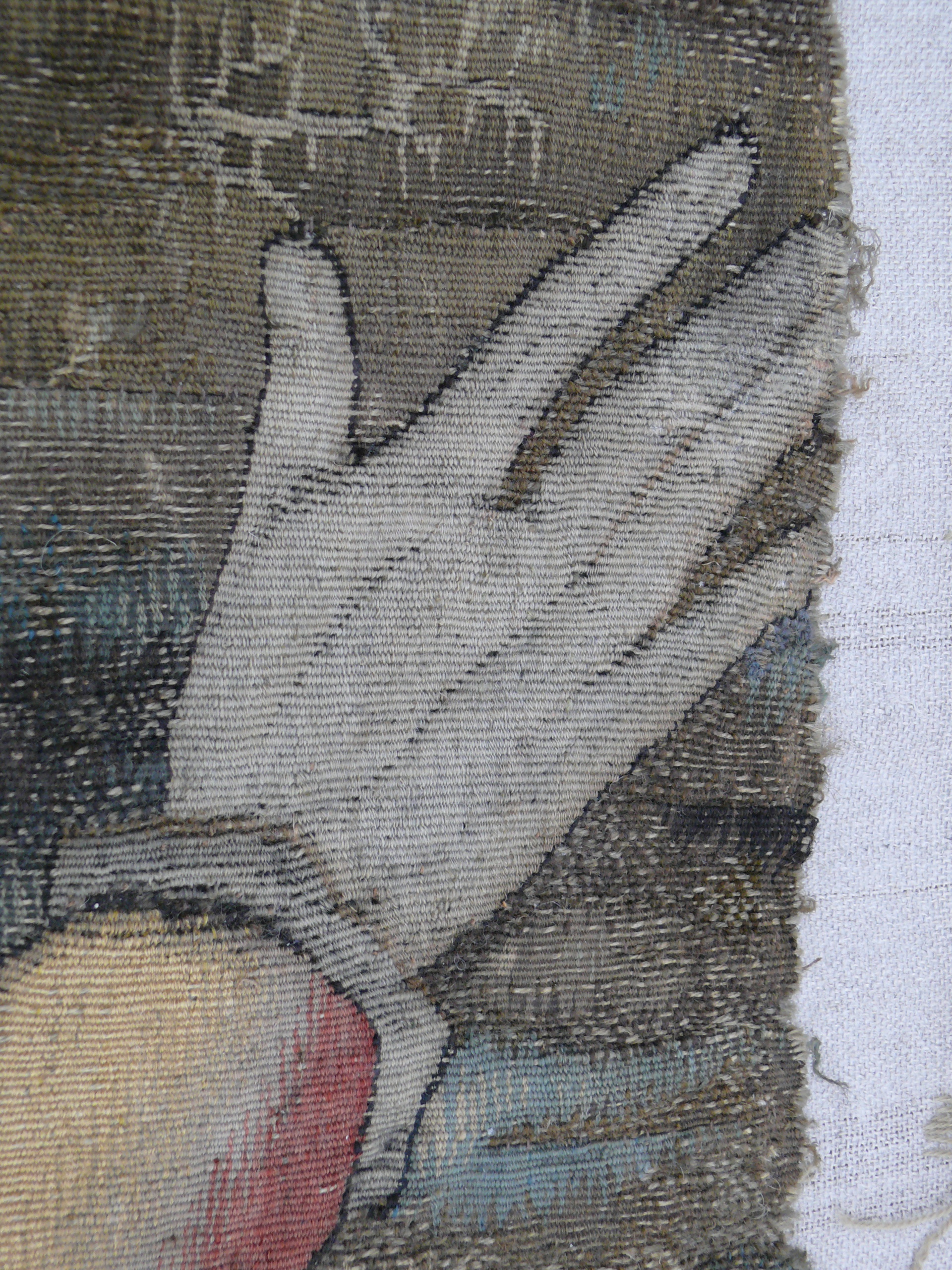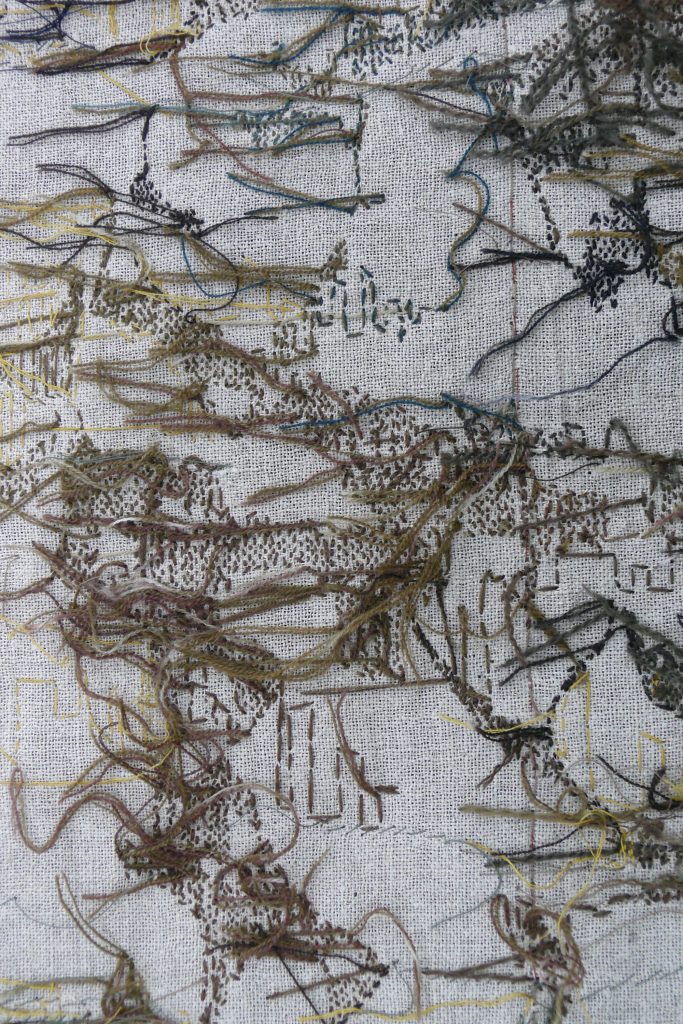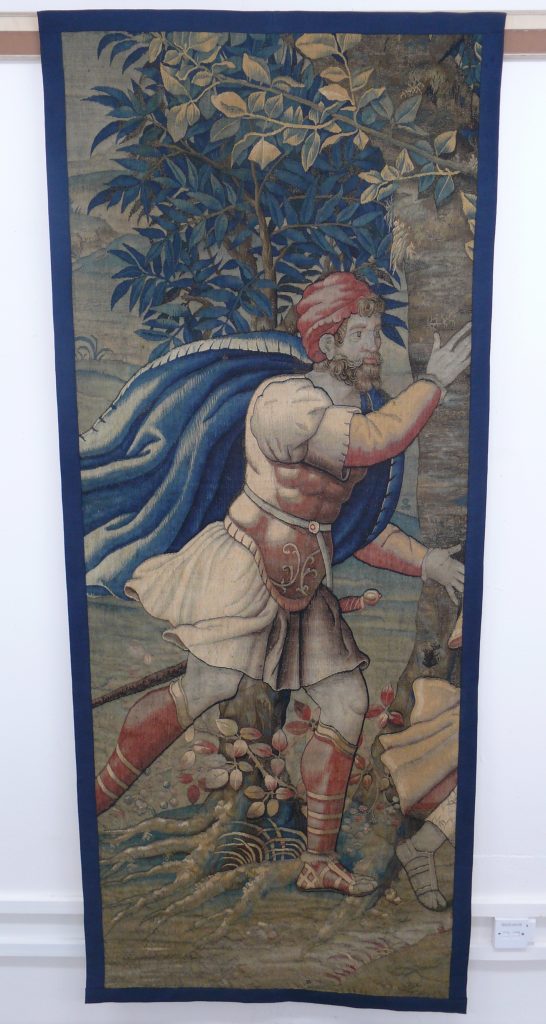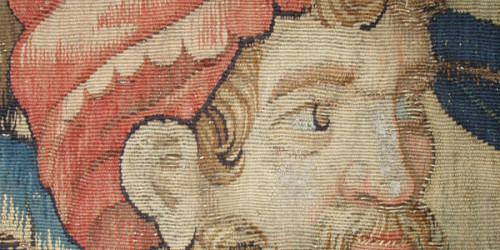
The 16th century Flemish (?) tapestry fragment colloquially known as the Gladiator was bought by Rudyard Kipling to furnish his family home Bateman’s, now owned by the National Trust. Prior to conservation at the ZTC Studio it was in poor condition with weak and missing areas of silk and wool weft. As is common with historic tapestry there was much loss of dark brown outlines – dark brown degrades due to inherent weakness caused by degredation of the iron mordant used in the orginal dyes. Lost outlines make the design appear blurred. There were also large, unsightly areas of cobbled, previous repair. Perhaps during Kipling’s time the fragment had been finished off at the edges with painted fabric “galloons” that were now completely disintegrating. The tapestry was very dusty and also had residues of paint and plaster such as seen on the main face below.
After careful surface cleaning the tapestry including delicate scraping away of the surface staining, the tapestry fragment was given a full linen support through which our conservation stitching was worked. Areas of cobbled repair were carefully unpicked to allow the weave to sit flat again. The full stitched support strengthened the weak tapestry and helped to re-define the original design.
When the conservation stitching was completed the missing section of tapestry at the top edge was infilled with a wool rep weave patch. This top edge still had to be folded behind the hanging mechanism as there was insufficient ceiling height to display it fully extended in the Hall at Bateman’s. The cut edges were finished off with the addition of new, faux galloons in dark blue rep weave fabric that echoes the tapestry weave and original galloons of the period. A new dust proof lining was also added.
The conserved tapestry is hanging once again in the entrance hall of Bateman’s, now owned by The National Trust.
